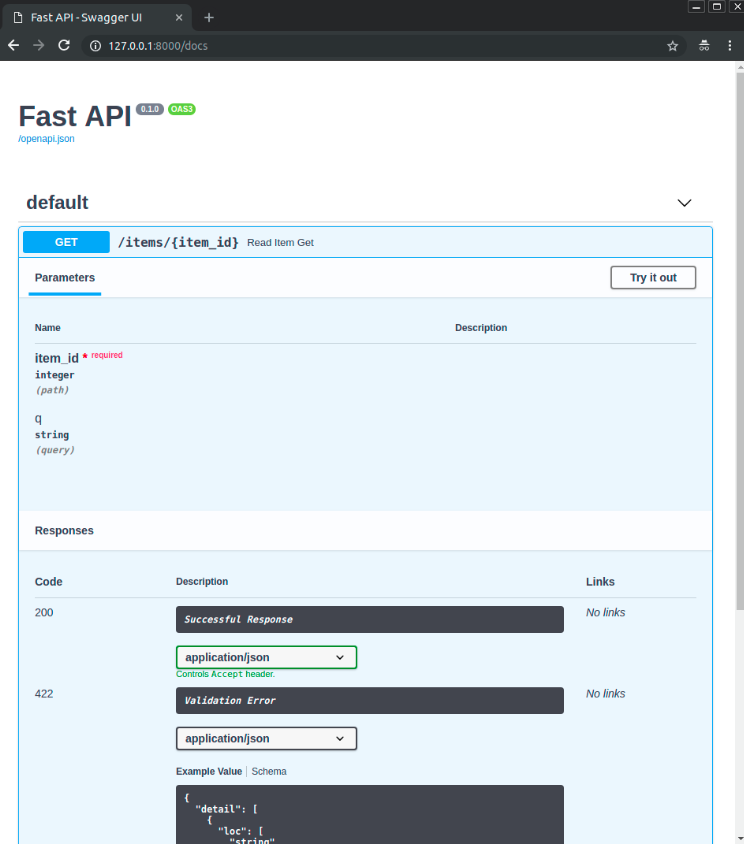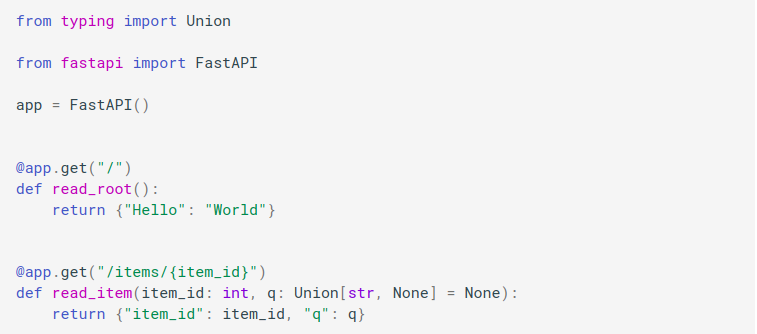
FastAPI (Web Framework)
What is FastAPI
FastAPI is a modern, fast(high-performance), web framework for building APIs with python 3.6+ based on standard python type hints(https://fastapi.tiangolo.com/tutorial). Web APIs have become increasingly important to the operation of modern businesses. As companies become more reliant on data, the importance of data communications continues to grow. While data technologies are emerging frequently, we need a fast, high-performance, and robust framework to build our APIs.
Why FastAPI ?
It’s a high-performance web framework. Its performance can be compared with NodeJS and Go and it is rated as one of the fastest Python frameworks available.The framework is designed to optimize the experience so that we can write simple code to build production-ready APIs with best practices by default. Most of the famous companies like Microsoft, Netflix, Ola, Uber have already started building their APIs using fast api library.
Key features of fast api:
- Fast– Very high performance, on par with NodeJS and Go (thanks to Starlette and Pydantic)
- Fast to code– Increase the speed to develop features by about 200% to 300%.
- Fewer bugs– Reduce about 40% of human (developer) induced errors.
- Intuitive– Great editor support. Completion everywhere. Less time debugging.
- Easy– Designed to be easy to use and learn. Less time reading docs.
- Short– Minimize code duplication. Multiple features from each parameter declaration. Fewer bugs.
- Robust– Get production-ready code. With automatic interactive documentation.
- Uvicorn– Hosted on uvicorn server
Native concurrency support:
It used to be very hard to implement concurrent programming in Python – Async I/O was added with Python 3.4. With FastAPI, concurrency can be easily implemented without worrying about Event loop or async/await management.
Developers can simply declare the first path function as coroutines via the async def function wherever they deem appropriate and then declare specific points aws awaitable through await.
Inbuilt data validation:
This is an enormous benefit – inbuilt data validation allows developers to create a compact code through skipping the validation. It can detect invalid data types during the run and returns the reason for bad input in JSON format.
FastAPI makes use of the Pydantic library for this purpose, which greatly simplifies the validation process and ensures faster typing than it would have been by hand.
FastAPI Swagger UI:
FastAPI provides web user interfaces. As the framework is based on OpenAPI, there are multiple options to be explored yet, but let’s look into the most common and important features of this framework.

Installation and run the fastAPI server:
This is the simple steps where you start your simple fast api application.
- pip install fastapi
- pip install “uvicorn[standard]”
- Create a file main.py with:


Conclusion:
Based on these factors, adopting the FastAPI framework for your next REST project is the smart option. Of course, the choice is yours and depends on your use case but you might want to give FastAPI a try.
I hope this article will create a motivation for you to build and host your APIs into your production. I also provide you a git-hub link where you can show how we can start installation, run-server and play around most of the things using fast APIs.
